The world’s most breathtaking apartment buildings are the antithesis of boring tower blocks. Born out of a desire to create something striking, each reflects the era during which it was built and the values its creators cherished. Today, their beautiful and often unusual architecture makes them stand out in a sea of drab residential complexes in many major cities. Here’s where to find seven unique apartment buildings that are architectural marvels.
Kubuswoningen – Rotterdam, The Netherlands
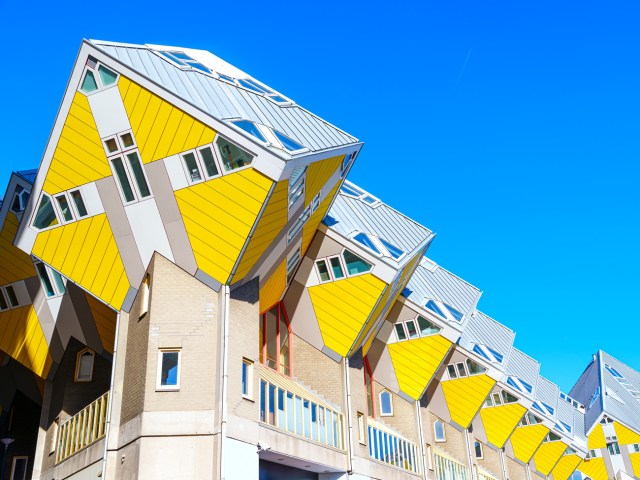
Piet Blom, the Dutch architect behind Rotterdam’s quirky cube houses, envisioned an urban forest when he created these unusual stacked apartments. Meant to represent individual trees, the cubes are slanted at an angle and painted a bright shade of yellow. They’re an instantly memorable landmark — no small feat in a city that’s made a name for itself with its boundary-pushing building design.
Inside the cube houses, which were completed in 1984, bespoke furnishings make the most of every inch of space, while the geometric angles of their windows are an ever-present reminder that these apartments break the mold. Most of the cubes are private residences, but one is a museum that curious visitors can tour.
Reversible Destiny Lofts – Mitaka, Japan
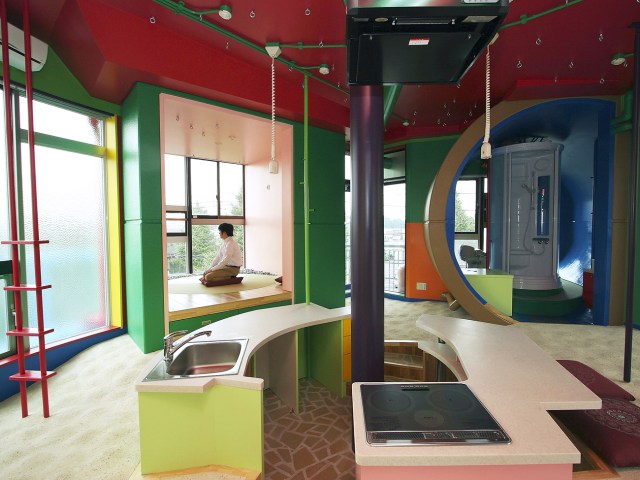
Located in a suburban Tokyo neighborhood, this colorful apartment complex is one of the most eye-catching apartment buildings in Japan. Built in 2005, it is the work of architects Shusaku Arakawa and Madeline Gins. The playful design of Reversible Destiny Lofts focuses on three stacked shapes — cube, tube, and sphere — which are connected by walkways and staircases. Inside, the floors are deliberately uneven, and the spaces are fitted with vertical poles to make navigating this unusual space possible.
The architects believed such constant stimulation would mean they’d prolong their lives and stave off age-related cognitive decline in the process. The entire complex is dedicated to the memory of Helen Keller, who “was a role model and a source of inspiration, someone who was able to practice ‘reversible destiny’ in her own lifetime,” according to the building’s website.
Aqua Apartments – Chicago, Illinois
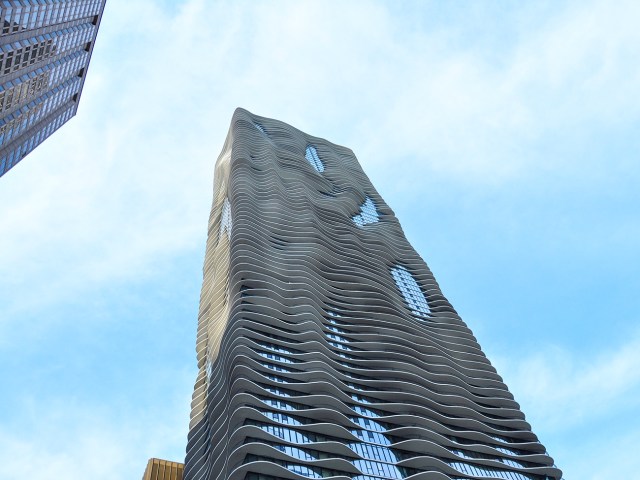
Opened in 2009, this 82-story apartment building in Chicago’s Lakeshore East neighborhood is one of the most distinctive skyscrapers to be built in the city in recent years. It was constructed on what was once a rail yard and surrounded by other high-rises, which proved a challenge for the architects when it came to protecting residents’ views. The answer: curvaceous, rippling balconies made from white concrete that extend outward to varying degrees from the walls of the building. These have the serendipitous benefit of also helping to protect the structure from the strong winds for which the city is known.
Burj Khalifa – Dubai, UAE
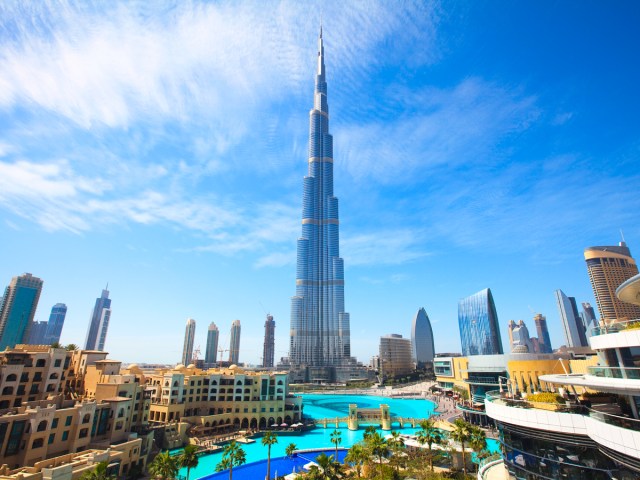
When Burj Khalifa topped out in 2009, it became the world’s tallest building, a position that it has held ever since. It rises 2,722 feet tall, standing as the needlelike centerpiece of the Downtown Dubai mixed-use development. There are 900 private residences in this iconic skyscraper, ranging from studios to four-bedroom apartments. The highest of these occupies the 108th floor, where, interestingly, the sun sets a couple of minutes later than at ground level — an important consideration for some residents during Ramadan.
Casa Milà – Barcelona, Spain

Groundbreaking architect Antoni Gaudí’s unconventional, elaborate, and fantastic structures can be found all over Barcelona, including the Sagrada Família, Parc Güell, and Casa Batlló. Though visitors can access the roof terrace and a fourth-floor apartment of Casa Milà, known to locals as La Pedrera (“The Quarry”), it remains primarily a residential building. On the outside, its apartments bear the architect’s signature curves and embellishments in the undulating stone and wrought-iron balconies, along with the marble and glass-clad roof.
Condominio 25 Verde – Turin, Italy
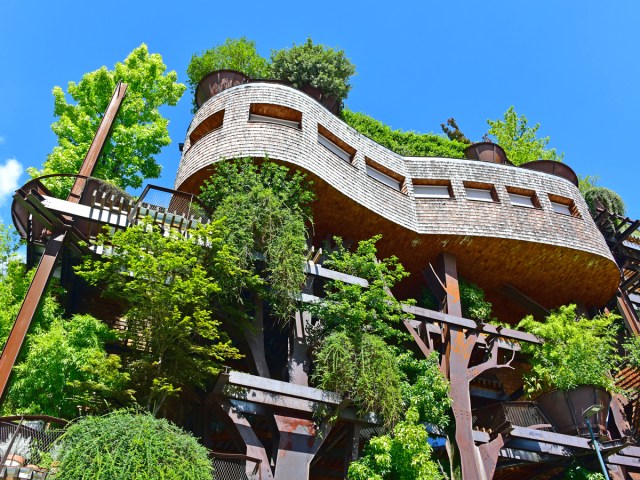
Architect Luciano Pie’s whimsical Condominio 25 Verde has graced the Turin skyline since 2012. Sharing a similar “vertical forest” aesthetic to Milan’s Bosco Verticale, the building incorporates plants and trees as an integral part of its design, injecting a bit of much-needed greenery into the surrounding urban environment. The plants also play a key role in reducing urban noise, achieving temperature control, and purifying the surrounding air. Rainwater harvesting systems are used to keep the vegetation healthy, while solar panels provide a source of renewable energy for the inhabitants of its 63 apartments.
The Interlace – Singapore
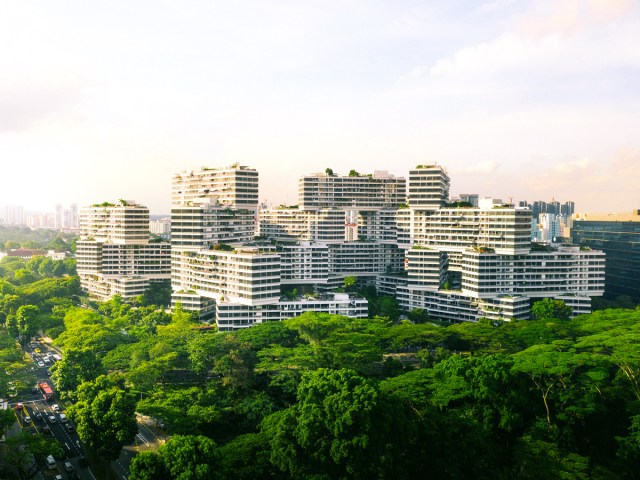
The architect behind the design of this Singaporean apartment complex was keen to address the potential issue of social isolation, which can be problematic for people who live in city high-rises. Ole Scheeren achieved his goal by creating a set of unique staggered blocks that form a hexagonal arrangement. Each of the 31 units is six stories tall, though the stacked design means that the center of the complex is actually 24 floors high. Cascading sky terraces, roof gardens, and unobstructed views of the verdant Southern Ridges make this feel like a true village and community in a way a vertical development never could.
More from our network
Daily Passport is part of Inbox Studio, which publishes content that uplifts, informs, and inspires.
















